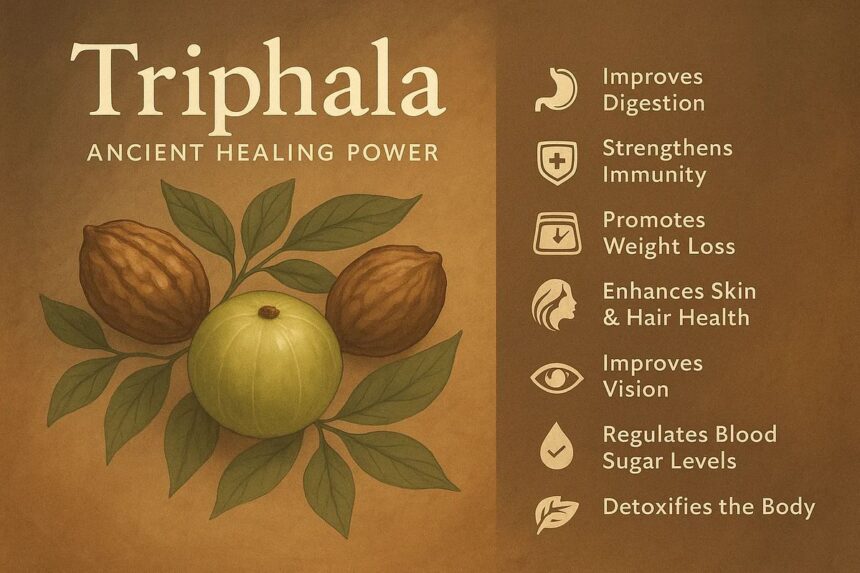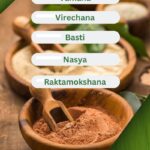Incredible Truths About Ayurvedic Herbology That Can Transform Your Life
Introduction: Understanding Ayurvedic Herbology
Ayurveda, the ancient Indian science of life, relies heavily on herbs and plants for maintaining health, treating diseases, and promoting longevity. This branch of Ayurveda is known as Herbology or Dravyaguna, which literally means the science of medicinal substances.
- Introduction: Understanding Ayurvedic Herbology
- 📜 History of Ayurvedic Herbology
- 🕰️ Timeline of Ayurvedic Herbology
- 🌿 Key Concepts of Ayurvedic Herbology
- ✅ Interesting Facts About Ayurvedic Herbology
- 🌍 Significance of Ayurvedic Herbology
- 🌞 Observance and Daily Life Applications
- 🙏 Wishing With Herbal Wisdom
- 🔍 FAQs About Ayurvedic Herbology
- ⭐ Review Section – Public & Expert Opinions
- 🌿 Daily Life Impacts
- 📌 Important Points
- 🌍 Importance to Society
- 🌟 Conclusion
Unlike modern synthetic medicines, Ayurvedic herbs work holistically, balancing the body, mind, and spirit. They are personalized according to dosha (Vata, Pitta, Kapha) and aim to restore natural harmony.
In this article, we will explore Ayurvedic Herbology’s history, timeline, key facts, significance, daily life applications, FAQs, review section, and its importance to society, all in a human-friendly manner.
📜 History of Ayurvedic Herbology
Vedic Roots (1500–1000 BCE): Early texts such as the Rigveda and Atharvaveda mention medicinal plants and their applications.
Charaka Samhita (1000 BCE): Detailed the therapeutic properties of herbs, including their taste, potency, and post-digestive effects.
Sushruta Samhita (600 BCE): Focused on surgical uses of herbs, wound healing, and antiseptic properties.
Ashtanga Hridayam (500 CE): Acharya Vagbhata systematized herb-based therapies for daily use, rejuvenation, and disease treatment.
Modern Era: Ayurvedic colleges and research institutions study herbal pharmacology, and herbal medicine is now globally recognized for wellness and alternative treatment.
🕰️ Timeline of Ayurvedic Herbology
| Period | Key Development |
|---|---|
| 1500 BCE | Vedic texts describe medicinal plants |
| 1000 BCE | Charaka Samhita details therapeutic herbs |
| 600 BCE | Sushruta Samhita uses herbs in surgery and healing |
| 500 CE | Ashtanga Hridayam standardizes herbal therapies |
| 20th Century | Formal education and research in Ayurvedic herbology begins |
| 21st Century | Global recognition of Ayurvedic herbs for health, wellness, and immunity |
🌿 Key Concepts of Ayurvedic Herbology
Dravyaguna (Properties of Herbs): Herbs are classified by Rasa (taste), Virya (potency), Vipaka (post-digestive effect), Prabhava (special effect).
Dosha Balance: Each herb is chosen based on its ability to balance Vata, Pitta, or Kapha.
Rasayana (Rejuvenation): Herbs that promote longevity, immunity, and vitality.
Sattvic Foods and Herbs: Pure, fresh, and natural herbs are preferred for mental clarity and spiritual growth.
Herbal Preparations: Oils, decoctions, powders, and pastes are tailored for specific ailments or wellness goals.
✅ Interesting Facts About Ayurvedic Herbology
Ayurveda uses over 1,500 documented herbs, each with unique therapeutic properties.
Turmeric, Ashwagandha, Brahmi, and Tulsi are among the most universally recognized and researched herbs.
Herbs in Ayurveda are classified as heating, cooling, or neutral, affecting body doshas accordingly.
Panchakarma therapies rely on herbal oils and decoctions for detoxification.
Ayurvedic herbology influenced Chinese, Tibetan, and Persian traditional medicine.
Modern research confirms many Ayurvedic herbs have antioxidant, anti-inflammatory, and immune-boosting properties.
Herbs are considered sacred and medicinal, not merely dietary supplements.
🌍 Significance of Ayurvedic Herbology
Preventive Health: Regular use of herbs strengthens immunity and prevents diseases.
Curative Applications: Herbs treat chronic conditions like arthritis, diabetes, and digestive disorders.
Mental Wellness: Herbs like Brahmi and Ashwagandha improve memory, focus, and stress resilience.
Sustainable Medicine: Uses natural, eco-friendly resources, reducing reliance on synthetic drugs.
Global Wellness Influence: Ayurvedic herbs inspire herbal supplements, teas, and wellness products worldwide.
🌞 Observance and Daily Life Applications
Herbal Teas: Tulsi, ginger, and chamomile teas help maintain digestion and immunity.
Ayurvedic Oils: Massage with sesame or coconut-based herbal oils balances doshas.
Dietary Supplements: Herbal powders and decoctions are integrated into meals.
Preventive Rituals: Using herbs seasonally, like cooling herbs in summer, heating herbs in winter.
Home Remedies: Common herbs treat colds, digestive issues, stress, and minor wounds naturally.
🙏 Wishing With Herbal Wisdom
“May the wisdom of Ayurvedic herbs fill your life with vitality, clarity, and natural balance, guiding you toward lifelong health and happiness.”
🔍 FAQs About Ayurvedic Herbology
Q1: What is Ayurvedic Herbology?
It is the study and use of medicinal herbs in Ayurveda for preventive, curative, and rejuvenative purposes.
Q2: Are Ayurvedic herbs safe?
Yes, when used under proper guidance and with attention to dosha balance, herbs are safe and natural.
Q3: How do herbs balance doshas?
Each herb has properties that cool, heat, or stabilize Vata, Pitta, or Kapha, restoring harmony.
Q4: Can herbs treat chronic diseases?
Yes, herbs like Ashwagandha, Turmeric, and Guggul are clinically proven to support chronic condition management.
Q5: Are Ayurvedic herbs globally recognized?
Yes, they are incorporated in herbal supplements, wellness teas, oils, and alternative therapies worldwide.
⭐ Review Section – Public & Expert Opinions
Patients’ Review: Many report better energy, digestion, and mental clarity after regular herbal routines.
Ayurvedic Doctors: Herbology is fundamental for treatment planning and preventive care.
Global Wellness Experts: Ayurvedic herbs are valued for detox, anti-aging, and immune support.
Personal Reflection: Unlike synthetic medicines, herbs promote long-term balance and vitality rather than temporary relief.
🌿 Daily Life Impacts
Improved digestion and metabolism with ginger, black pepper, and cumin.
Enhanced immunity with Tulsi, Giloy, and Turmeric.
Stress relief and mental clarity with Ashwagandha, Brahmi, and Shankhpushpi.
Natural detoxification using Triphala and herbal teas.
Supports sustainable living by using locally grown, seasonal herbs.
📌 Important Points
Ayurvedic herbs are personalized according to dosha and season.
Regular use improves physical, mental, and spiritual health.
Herbology guides preventive and curative healthcare.
Integration with lifestyle and diet maximizes benefits.
Ancient knowledge is compatible with modern wellness and natural therapies.
🌍 Importance to Society
Encourages natural and sustainable healthcare.
Reduces dependency on chemical medications.
Promotes cultural heritage and traditional knowledge.
Influences global herbal medicine and wellness industry.
Supports holistic public health strategies and community well-being.
🌟 Conclusion
Ayurvedic Herbology is more than the use of plants—it is a holistic science of life, health, and vitality. By understanding the therapeutic properties of herbs, one can prevent illness, restore balance, and promote longevity.
Whether for daily health, chronic disease management, or mental clarity, Ayurvedic herbs offer a natural, sustainable, and effective solution for modern life.
✨ May the power of these ancient herbs bring harmony, health, and happiness into your life. 🌿








